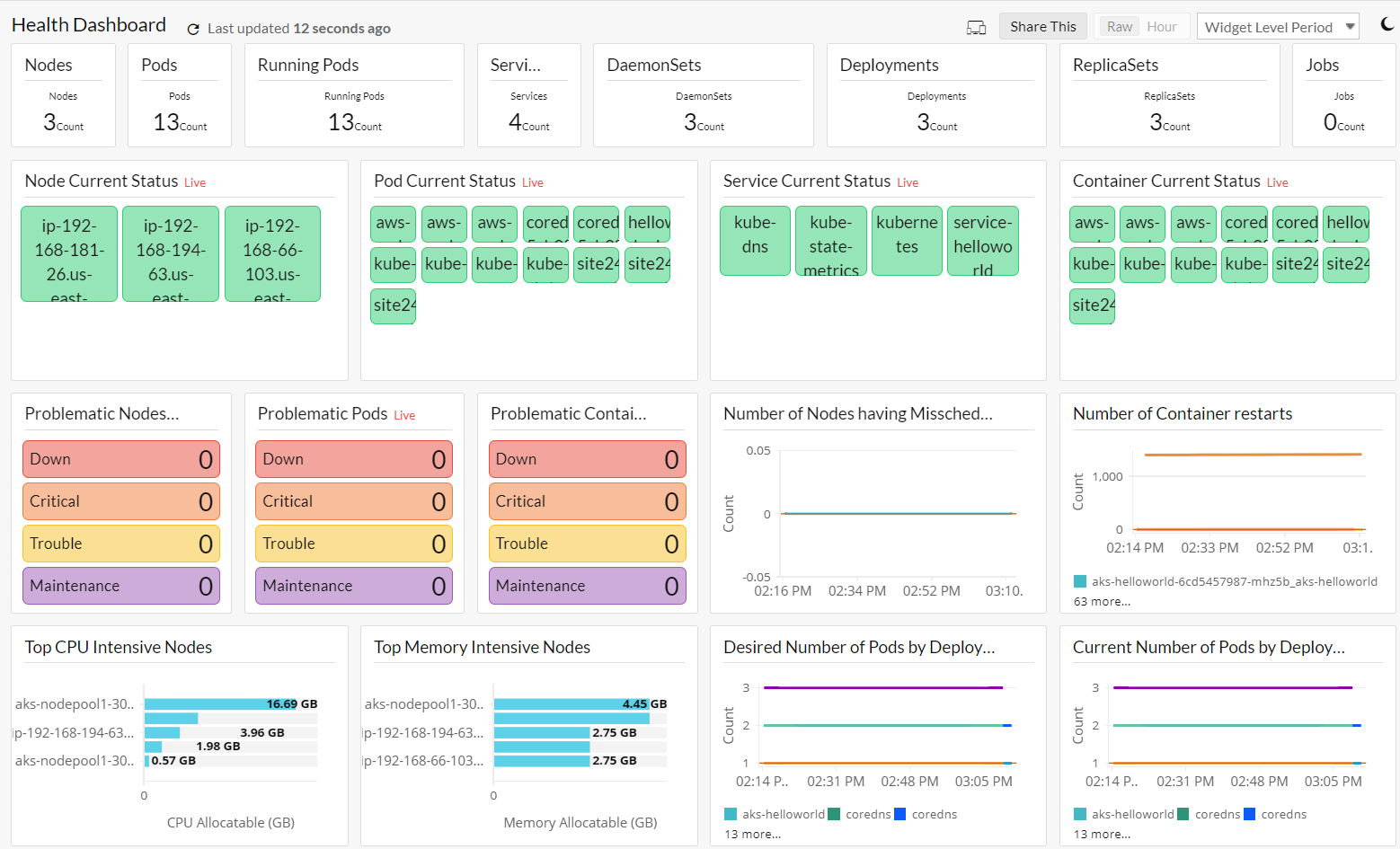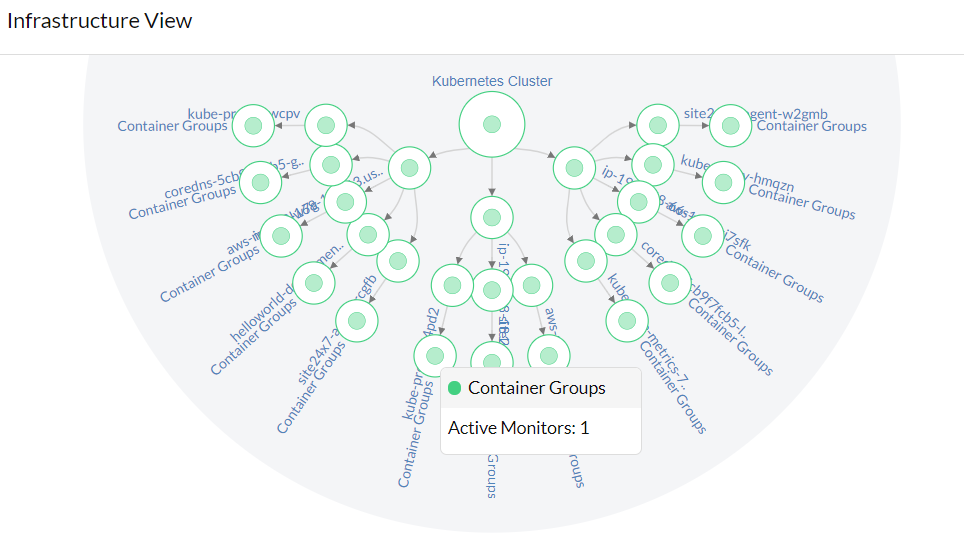Monitor Kubernetes with Site24x7
Greetings,
We are excited to release monitoring support for Kubernetes clusters. Before getting into the specifics of the monitoring features, let's read on to know why it's important to monitor Kubernetes.
Why monitor Kubernetes?
Kubernetes simplifies application deployment in containers, but also brings a set of challenges:
- To keep a check on the entire Kubernetes cluster and its vast components in a hassle-free manner,
- To know how an application behaves when it is deployed to scale.
This demands a monitoring solution that analyzes the performance of the multi-layered environment from one console, proactively identifies issues, and auto-remediates them without manual intervention. Secondly, due to the dynamic nature of Kubernetes, the monitoring solution should be able to adapt to the changing needs, constantly monitor the clusters without any interruption.
Ideally, the goal of a monitoring system should be to provide metrics on the health and performance at every level of the cluster, keep up with the ephemeral nature of Kubernetes, and provide a reliable user experience.
Monitor Kubernetes with Site24x7
Let's look at the features Site24x7 offers for monitoring Kubernetes clusters:
- Support for On premise, Azure (Azure Kubernetes Engine), AWS (Elastic Kubernetes Service), and GCP (Google Kubernetes Engine) platforms.
- Auto-discover all components including nodes, containers, pods, deployments, HPA, and ReplicaSets and adds them for monitoring, once the agent is installed.
- In-depth performance metrics for containers, pods, services, nodes, DaemonSets, endpoints, StatefulSets, Persistent Volume Claim (PVC), and Horizontal Pod Autoscaler (HPA).
- View the current status of all components and the entire cluster with the Health dashboard.

- Get inventory details including their respective labels, annotations, OS type on the nodes, pods, DaemonSets, deployments, endpoints, ReplicaSets, and services.
- Spot outliers and detect unusual monitoring patterns in your Kubernetes cluster with Business views - on an infrastructure level (from a node point of view) and service level.

- Receive timely alerts on under provisioned or over provisioned clusters and automate fault resolution with IT Automation tools.
Get Started
Read our help documentation for step-by-step instructions. For any questions, please comment in the below thread or mail us at support@site24x7.com.
Topic Participants
Bit Cloud Operation
Laurids Schmidt
Theivaanai R